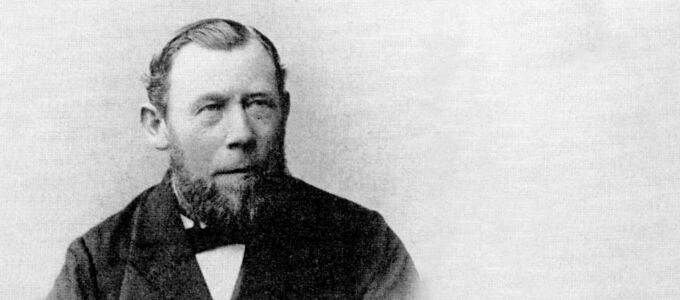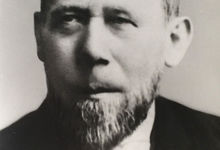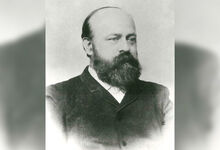Liturgical milestones in book format
What role does the timing of the Our Father play in the worship service? Why are the prayers spoken without a script? Why does the organ play softly prior to the divine service? Answers to these questions can be found in the early liturgies of the Church.

It was 180 years ago that Heinrich Christian Friedrich Wachmann first saw the light of day. He was one of the people whom the New Apostolic Church owes its liturgy and hymnal. Being involved in the creation of hymn books seems to have run in the family. His son Friedrich Wachmann married Eliese Sebastian, the daughter of Wilhelm Sebastian. He published a hymn collection along with a brief guide on how divine services were to be structured.
After Stechmann came Wachmann
The term “Wachmann liturgy” would be familiar to all New Apostolic members who have an interest in history. This was the term used to distinguish a book published in 1895 with the rather cumbersome title The Liturgy. A Devotional Book for use in all Divine Services of the Apostolic Community from the so-called Stechmann liturgy of 1864. Something that is less well-known is the role the trained baker and later Apostle played in its creation. It was through him that the liturgical book could be obtained, and it is most likely that he himself had compiled it.
The sermon moves into the spotlight
The devotional book rightly bears the title “Liturgy”, because—like its predecessor, the Stechmann liturgy—it contains information about the course and sequence of the divine services on various occasions, albeit significantly less.
Not all the prayers were formulated in their entirety in the Wachmann liturgy, as it tended toward unscripted prayers. It also called for the Lord’s Prayer to be moved from its initial place at the start of the divine service to a new position preceding the celebration of Holy Communion—its familiar place today. From that point on, this prayer was considered the collective confession of the congregation. Beyond that, it did away with a number of liturgical hymns, antiphonal music, and Bible readings, which made the divine service somewhat shorter in general. In this new liturgy by Heinrich Christian Friedrich Wachmann, the focus was clearly on the sermon, which now became the essential feature of the divine service.
Music in the divine service
There are many more hymns—180 of them, to be precise—to be found in the Wachmann liturgy than in the Stechmann liturgy. They come from the Protestant repertoire and are sung in accordance with familiar choral melodies. Also scattered throughout are some liturgical hymns and, for the first time ever, American revival hymns.
The first part of this devotional book also contains 32 hymns for regular divine services, as well as brief periodical instructions for the officiant. It also contains hymns for church holy days ranging from Advent to Pentecost.
The second part focuses on the acts of baptism, confirmation, and marriage. Each of these acts comes with a set of three hymns as well as a series of instructions describing how each of them is to be performed. This is followed by a section entitled “Hymns of praise and thanksgiving”, which contains other hymns, although not all of them were actually related to praise and thanksgiving.
A third part of the book, which is designated as an appendix, contains a further selection of hymns, this time from the repertoire of the free church communities.
Incidentally, quiet organ music was not prescribed prior to the divine service in the Wachmann liturgy. This practice developed from the necessity to familiarise the members with the new hymn repertoire and to acoustically distinguish the divine service space somewhat from the mundane, since the gathering places of the early years were quite often nothing but barns and living rooms, according to the reports of the time.
Photo: Zentralarchiv NAK Westdeutschland
Article info
Author:
Date:
Keywords:
Katrin Löwen
25.08.2021
Apostle,
liturgy,
Divine service,
Music,
People/Personalities






